Egg Item Number: Ch44 from the MOA: University of British Columbia
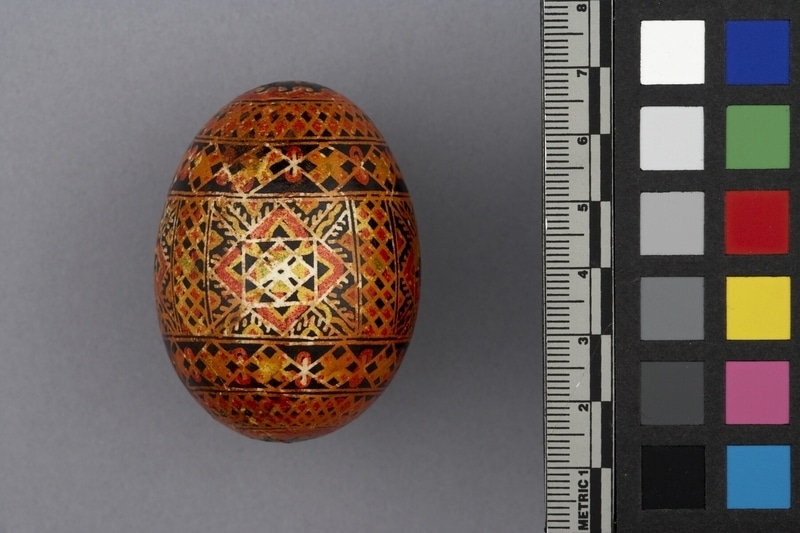
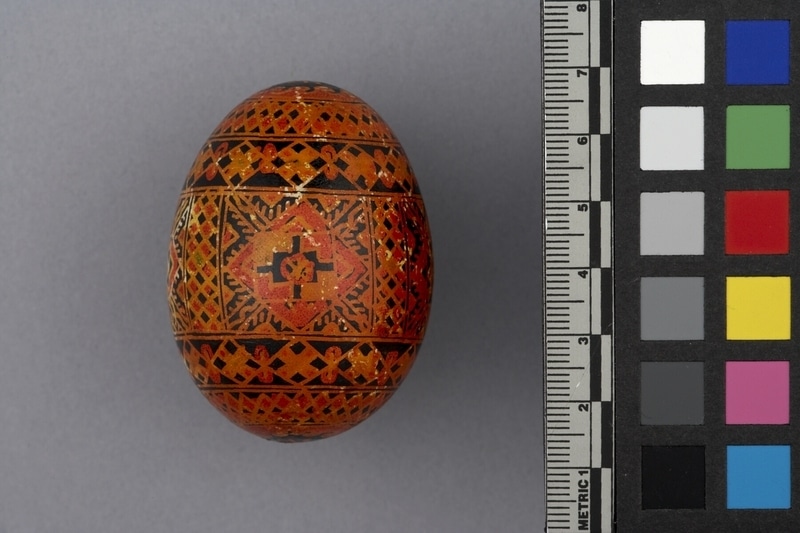
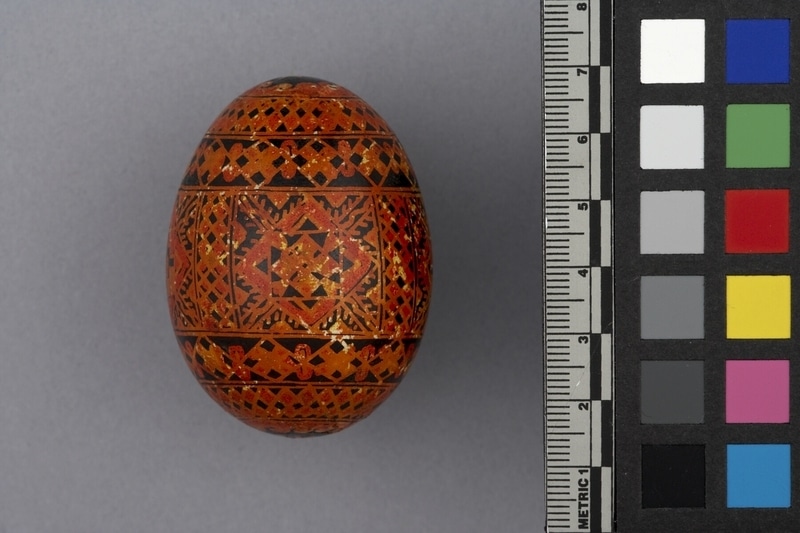
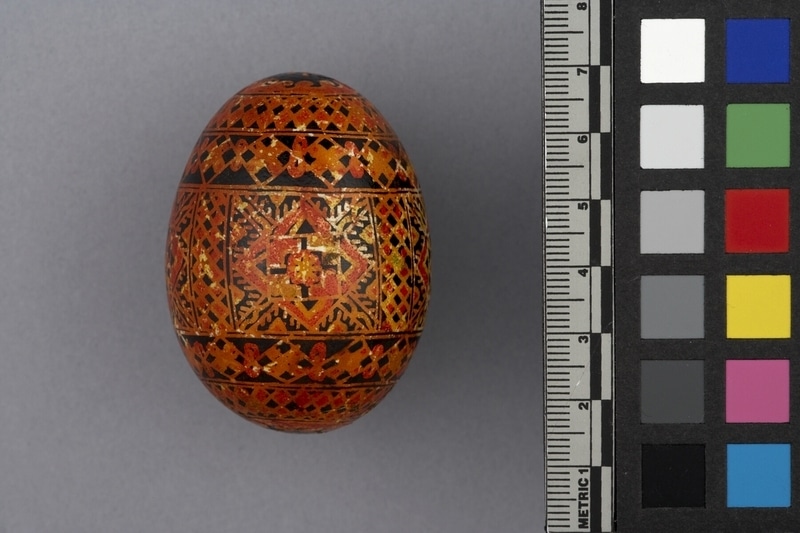
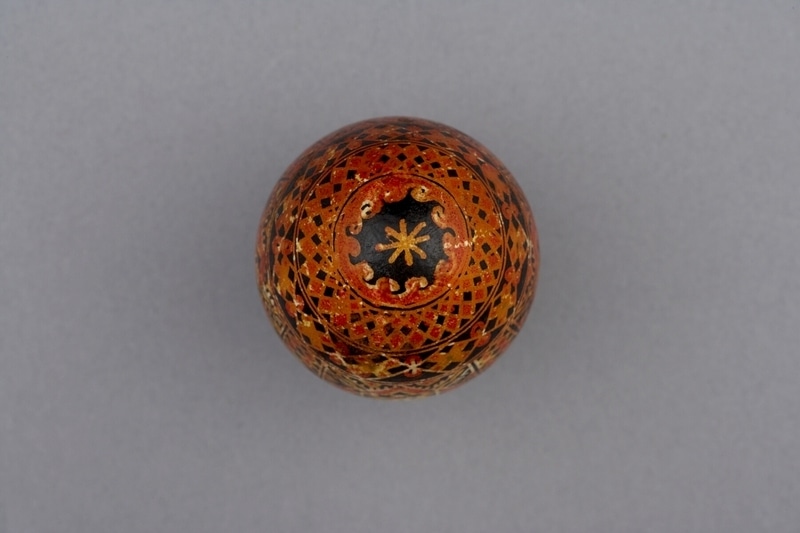
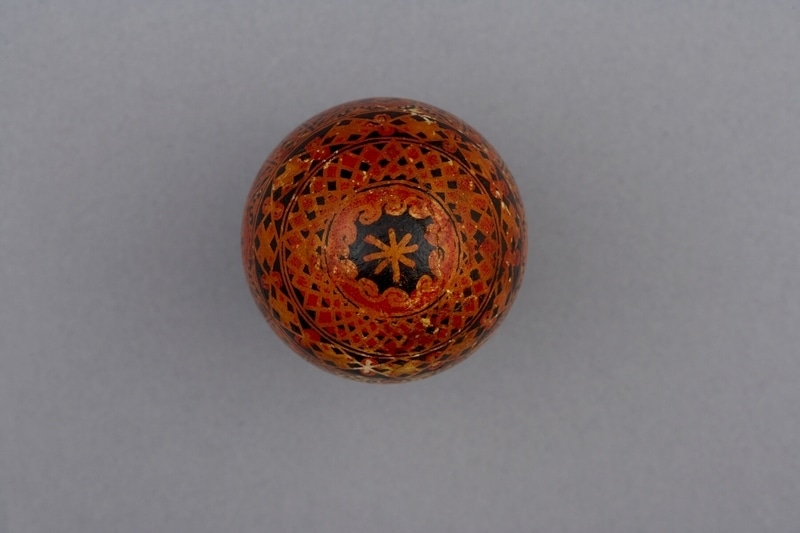
Description
Easter egg with black background, intricately covered with light and dark orange designs. Both ends of egg has a simple star design, then a wave design surrounding the stars, next is a row of double diamonds, a row of larger diamonds with 4 petalled flowers. At centre is a wide band with large diamond shapes surrounded by a feather design and perpendicular rows of double diamonds. The colours have faded to a light yellow brown in areas. The egg does not appear to have been hollowed. Cracked on bottom, large end.
History Of Use
Pysanka (decorated eggs) are a traditional folk art with pre-Christian roots. Eggs in early times were associated with sun worship, with the yolk representing the sun, and whites the moon. Eggs were used to greet the Spring. Greeting the Spring is still important, however. Easter is their most important association. These eggs are considered benevolent talisman. Children receive light coloured eggs with floral designs. Teenagers are given eggs with blank spaces to represent lives yet to be lived. Married couples receive 40 triangle eggs representing all aspects of their lives together. Older persons are given eggs with black belts, ladders and gates representing heavenly bridges. The eggs are made at night by gatherings of mentally and physically purified women. They are given and exchanged in many contexts.
Narrative
From the Mykhalylo Huculak Hutzulian Folk Art Collection.
Cultural Context
ritual; folk art
Specific Techniques
They are made by resist dying with bees wax applied in various layers and melted off.
Iconographic Meaning
The decorations on pysanka eggs symbolize hope, happiness and protection from evil. When a women is in the process of making the egg, goodness is said to be transferred to the design and to the household.
Item History
- Made in Ukraine before 1978
- Owned by Maria Yasegn before November 2, 1978
- Received from Maria Yasegn (Donor) on November 2, 1978
What
Who
- Culture
- Hutsul
- Previous Owner
- Maria Yasegn
- Received from
- Maria Yasegn (Donor)
Where
- Holding Institution
- MOA: University of British Columbia
- Made in
- Ukraine
When
- Creation Date
- before 1978
- Ownership Date
- before November 2, 1978
- Acquisition Date
- on November 2, 1978
Other
- Condition
- good
- Accession Number
- 0493/0027